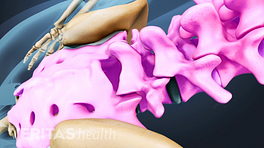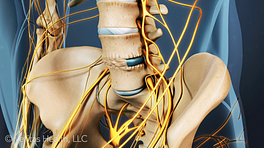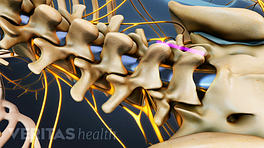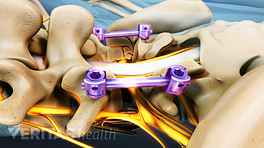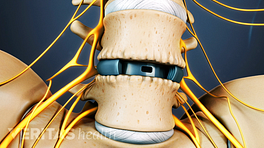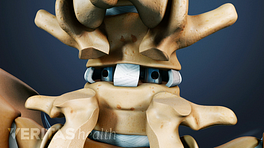This anterior/posterior lumbar fusion procedure is usually done for patients with a high degree of spinal instability (e.g. fractures), or in revision surgery (if the initial fusion did not set up), although some spine surgeons do prefer the anterior/posterior fusion surgery as a primary spinal fusion technique.
Anterior/Posterior Lumbar Fusion Surgery Advantages
Fusing both the front and back provides a high degree of stability for the spine and a large surface area for the bone fusion to occur. Also, approaching both sides of the spine often allows for a more aggressive reduction for patients who have deformity in the lower back (e.g. isthmic spondylolisthesis).
Most times, the anterior (from the front) approach is performed first. By removing the disc material and cutting the anterior longitudinal ligament (which lays on the front of the disc space), the spinal segment is "released" and allows for a more complete reduction. After the anterior and the posterior spinal implants are inserted, this segment is much more stable than even a normal spine segment.
Some spine surgeons feel that if stabilization is achieved both through an anterior and a posterior approach, patients can be mobilized earlier in the postoperative period. Studies have shown that fusing both sides of the spine in the lower back does lead to a very high fusion rate (greater than 95% of these cases will achieve a solid fusion).
Anterior/Posterior Lumbar Fusion Surgery Considerations
A drawback of the procedure is that both an anterior incision in the abdomen and a posterior incision in the low back need to be done. Some spine surgeons prefer to achieve anterior and posterior stability through a PLIF procedure, although there are drawbacks to approaching the disc space through a posterior approach (please see PLIF surgery). Spine surgeons with a strong comfort level for doing ALIF surgery generally prefer an anterior/posterior approach.
This technique does provide for very high rates of spinal fusion, but the spine fusion surgery is quite extensive and carries the risks inherent in both approaches. However, a trade off may involve aggressively distracting the anterior disc space so that the posterior portion of the surgery can be minimized. Some surgeons are even combining an anterior approach with percutaneous pedicle screws to minimize the dissection and subsequent morbidity of the posterior approach.

